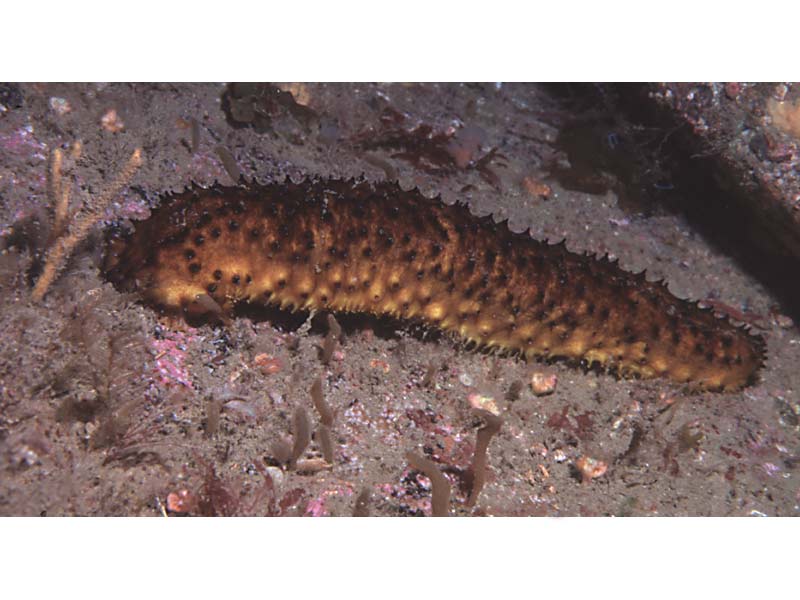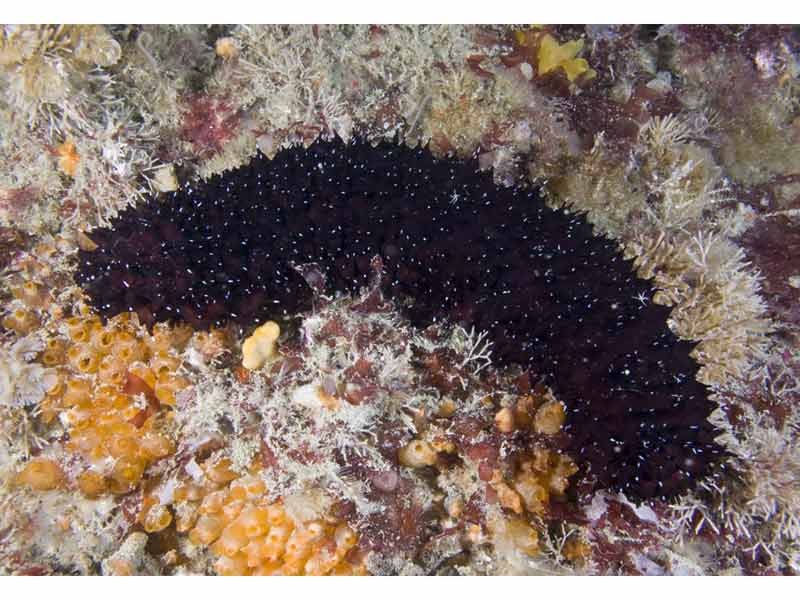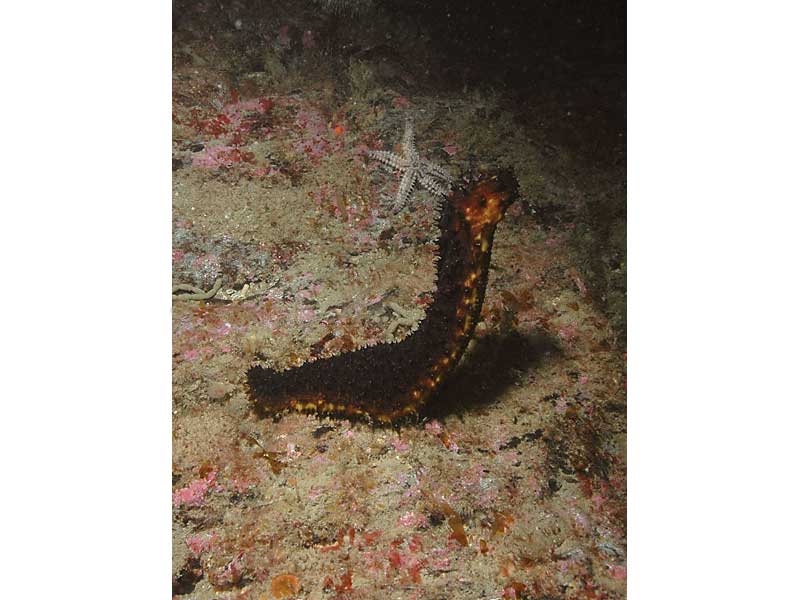Cotton spinner (Holothuria (Panningothuria) forskali)
Distribution data supplied by the Ocean Biodiversity Information System (OBIS). To interrogate UK data visit the NBN Atlas.Map Help
| Researched by | Paolo Pizzolla | Refereed by | Admin |
| Authority | Delle Chiaje, 1823 | ||
| Other common names | - | Synonyms | - |
Summary
Description
Recorded distribution in Britain and Ireland
Recorded from rocky coasts of south-west England, south and north Wales, the Isle of Man, north west England, the coasts of Ireland, west Scotland, and the Shetland Isles.Global distribution
Most records are from the British Isles but it ranges from the Shetland Isles south to the Azores and Morocco and into the Mediterranean as far as the Adriatic and Aegean Seas and the coast of north Africa.Habitat
The cotton spinner is mostly found in the shallow sublittoral on rocky or, more rarely, sediment substrata. It has been recorded to depths of 300 m and occasionally on shores at extreme low water among rocks and stones.Depth range
0 - ca 300 mIdentifying features
- Cylindrical body up to 25 cm long.
- Raised conical protrusions (papillae) on dorsal surface.
- Approximately 20 stumpy, branched tentacles around mouth.
- Dorsal surface dark brown or black, undersides paler.
- Discharges sticky white threads when threatened.
Additional information
-none-Listed by
- none -
Bibliography
Fish, J.D. & Fish, S., 1996. A student's guide to the seashore. Cambridge: Cambridge University Press.
Hayward, P.J. & Ryland, J.S. (ed.) 1995b. Handbook of the marine fauna of North-West Europe. Oxford: Oxford University Press.
Picton, B.E., 1993. A field guide to the shallow-water echinoderms of the British Isles. London: Immel Publishing Ltd.
Datasets
Centre for Environmental Data and Recording, 2018. Ulster Museum Marine Surveys of Northern Ireland Coastal Waters. Occurrence dataset https://www.nmni.com/CEDaR/CEDaR-Centre-for-Environmental-Data-and-Recording.aspx accessed via NBNAtlas.org on 2018-09-25.
Nature Locator, 2017. Sealife Tracker. Occurrence dataset: https://doi.org/10.15468/qgk3pg accessed via GBIF.org on 2018-10-01.
NBN (National Biodiversity Network) Atlas. Available from: https://www.nbnatlas.org.
OBIS (Ocean Biodiversity Information System), 2025. Global map of species distribution using gridded data. Available from: Ocean Biogeographic Information System. www.iobis.org. Accessed: 2025-04-04
Citation
This review can be cited as:
Last Updated: 17/01/2007






